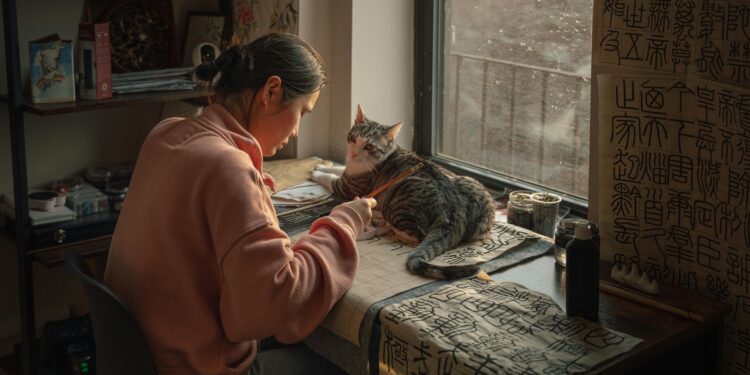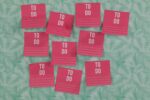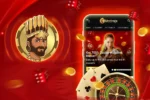The Art of Calligraphy in Game Design: Where Fonts Become Worlds

In gaming, visuals often take center stage—character models, landscapes, and mechanics usually dominate discussions about immersion. Yet, one subtle but powerful element often goes unnoticed: calligraphy.
The way text is styled—whether through ornate lettering, futuristic fonts, or brush-stroke aesthetics—can significantly shape a player’s experience. Far beyond just words on a screen, calligraphy in game design becomes a narrative device, a world-building tool, and a cultural bridge.
Why Calligraphy Matters in Game Design
Fonts are not neutral. Every stroke, curve, and serif carries meaning. In game design, the right calligraphic choice conveys atmosphere instantly:
- A gothic script can make a horror game feel foreboding.
- Brush-style fonts can immerse players in Japanese-inspired landscapes.
- Futuristic neon fonts create the sense of cyberpunk speed and chaos.
In this way, calligraphy is more than design—it’s storytelling. It guides the player’s perception before they even press “Start.”
1. Historical Inspirations in Game Typography
Calligraphy’s role in games often borrows from historical traditions:
- Medieval Scripts: Fantasy role-playing games frequently use blackletter fonts to echo ancient manuscripts.
- East Asian Brushwork: Games set in Japan or China may integrate sumi-e or ink-inspired lettering, tying text to cultural authenticity.
- Arabic Brush-Style Fonts: Occasionally incorporated into puzzle or adventure games, stylized Arabic scripts evoke mystery and sacredness.
When games integrate these styles, brush-style fonts bridge history and fiction, grounding virtual worlds in recognisable aesthetics.
2. Calligraphy as a World-Building Tool
Every game world has its own culture, be it a cosy game or a competitive game, and lettering often serves as its “silent language.” Custom calligraphic fonts can signal:
- Fantasy Lore: Unique scripts that feel like ancient languages, such as Elvish in The Lord of the Rings games.
- Sci-Fi Futures: Sleek, geometric brush-inspired fonts used for alien languages or futuristic UI.
- Mystical Elements: Magical runes and glowing inscriptions, where calligraphy becomes part of the gameplay puzzle.
Through such integration, a brush-style font doesn’t just decorate—it embodies the world itself.
3. Iconic Uses of Calligraphy in Games
Several games have leveraged brush-style fonts to iconic effect:
- Okami (Capcom): Known for its sumi-e brushstroke aesthetic, where brush-style fonts becomes both visual design and gameplay mechanic.
- Yakuza Honor by PG Soft: Japanese calligraphy enriches the game’s menus and scene transitions, reinforcing cultural identity.
- The Elder Scrolls V: Skyrim: Gothic-inspired fonts amplify the medieval fantasy world.
- Cyberpunk 2077: Neon fonts inspired by East Asian brush-inspired fonts create a futuristic, globalized urban vibe.
These examples demonstrate how lettering styles influence player immersion as strongly as soundtracks or environments.
4. The Psychology of Calligraphy in Gaming
Typography and calligraphy tap into player psychology:
- Immersion: Decorative fonts signal seriousness and believability in a world.
- Emotion: Soft brushstrokes evoke calmness, while sharp serifs suggest danger or formality.
- Memory: Players often recall logos and UI fonts as much as characters. For example, the calligraphic logo of Dark Souls is as iconic as the gameplay itself.
This shows that fonts aren’t just visual accents—they trigger emotional and cognitive responses.
5. Custom Fonts: A New Frontier in Game Design
As technology evolves, studios are designing custom brush-inspired fonts to stand apart:
- Hand-Drawn Logos: Many indie games rely on personalized lettering to create identity.
- Dynamic Calligraphy: Some titles use interactive fonts that shift based on player choices or in-game environments.
- AI-Generated Fonts: With AI tools, developers can now design calligraphic variations at scale, blending artistry with algorithmic efficiency.
These trends highlight how brush-style fonts are no longer static—it’s adaptive, evolving alongside interactive media.
6. In User Interfaces (UI)
Fonts matter in menus, loading screens, and in-game overlays. The wrong calligraphy can disrupt readability, while the right balance blends beauty with clarity.
Successful UI integration follows principles:
- Balance: Decorative brush-style fonts for titles, clean fonts for instructions.
- Contrast: Pair ornate headers with simple body text.
- Theme: Calligraphy should match the setting—don’t use gothic fonts in sci-fi unless subverting expectations.
This thoughtful pairing ensures fonts contribute to design without sacrificing usability.
7. How Indie Developers Use It
Independent studios often experiment boldly with typography. Many embrace brush-style fonts for branding, logos, and narrative texts, making their games stand out. Some even design puzzles around deciphering calligraphic scripts, merging art with gameplay mechanics.
For players, this experimentation provides fresh aesthetic experiences that differ from mainstream franchises.
Beyond Games: Calligraphy and Fandom
Calligraphy-inspired fonts extend into fan culture:
- Cosplayers replicate calligraphic logos for props and costumes.
- Streamers use themed overlays echoing the games’ lettering styles.
- Fan artists reimagine game logos in alternative calligraphic traditions.
This shows how the artistic appeal of calligraphy in game design resonates well beyond gameplay itself.
The Future of Brush-Inspired Fonts in Games
Looking ahead, we can expect these fonts to evolve through:
- AR/VR Experiences: Immersive fonts that appear as floating runes or holograms.
- Procedural Calligraphy: Generative design tools producing endless variations of scripts.
- Cross-Cultural Blending: Hybrid styles combining Gothic, Arabic, and East Asian brush-inspired fonts into futuristic aesthetics.
Calligraphy in game design will increasingly shape not just aesthetics, but mechanics, storytelling, and player identity.
Fonts as Silent Storytellers
Calligraphy may not grab attention like epic boss fights or cinematic cutscenes, but its influence is everywhere. Whether etched into magical runes, flowing across a futuristic HUD, or woven into a game logo, brush-style fonts communicates mood, culture, and narrative without a single spoken word.
For designers, understanding the power of fonts isn’t just an artistic flourish—it’s essential. As the boundary between art and interaction continues to blur, calligraphy will remain a core ingredient of gaming’s visual language.








